Protecting biodiversity for 80,000 acres of urban forest
Changchun Middle Mountain Framework Plan
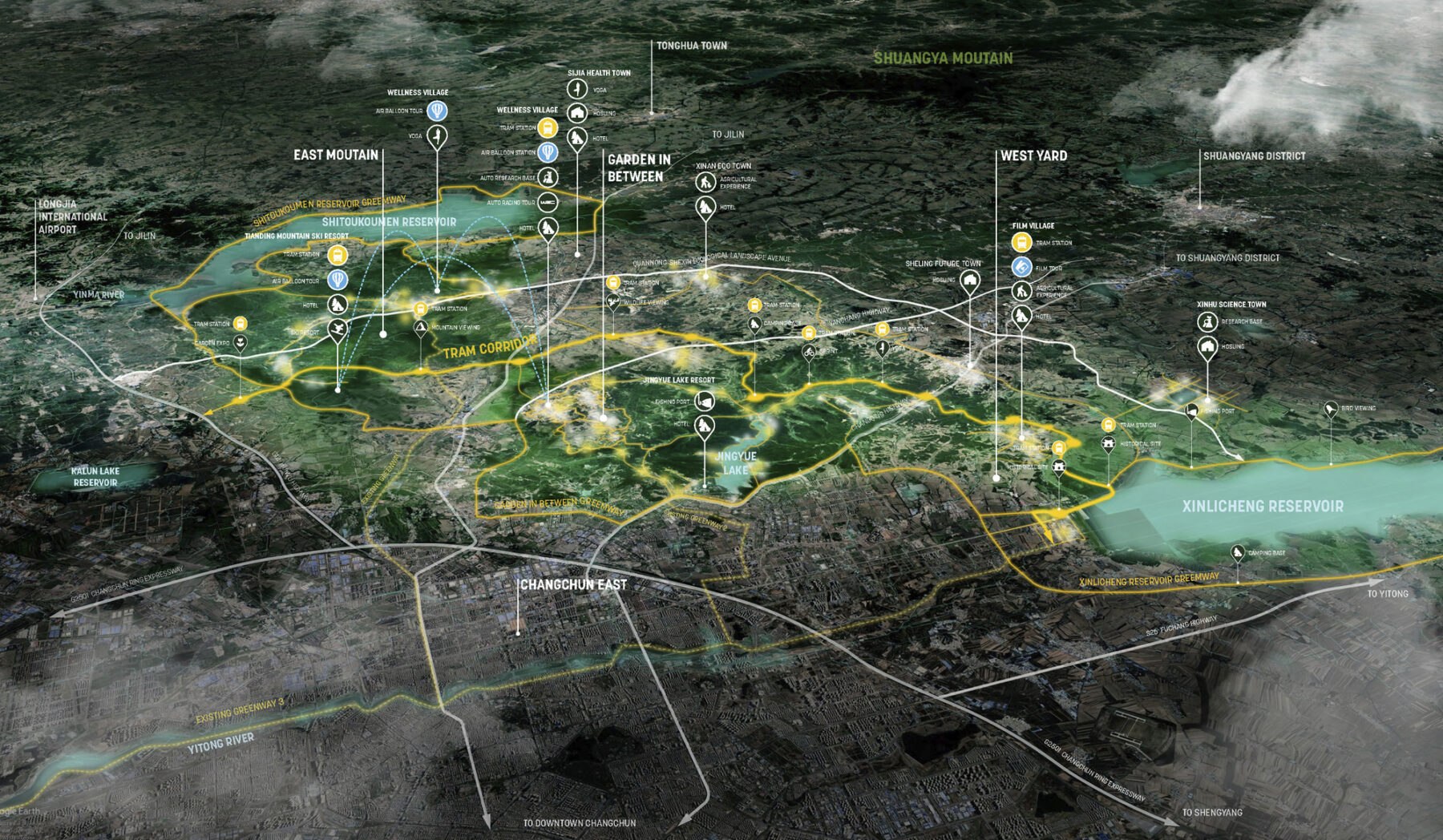
Healthy and ecologically resilient habitats are defined alongside strategically-located development.
Situated at the confluence of the montane mixed deciduous forests of the Changbai Mountains and the region’s broad, flat, and fertile agricultural lands, Changchun is known as the green jewel of China’s Northeast Plain. With over 40% of the urban area protected as parks and nature reserves, this public open space network forms the foundation of Changchun’s urban fabric.
The 255 square mile study area includes three reservoirs, agricultural fields, multiple decommissioned mining sites, and significant upland forests. Conserving and restoring over 80,000 acres of increasingly threatened urban forest establishes a solid foundation for this diverse habitat to expand and thrive while also accommodating strategic future development.
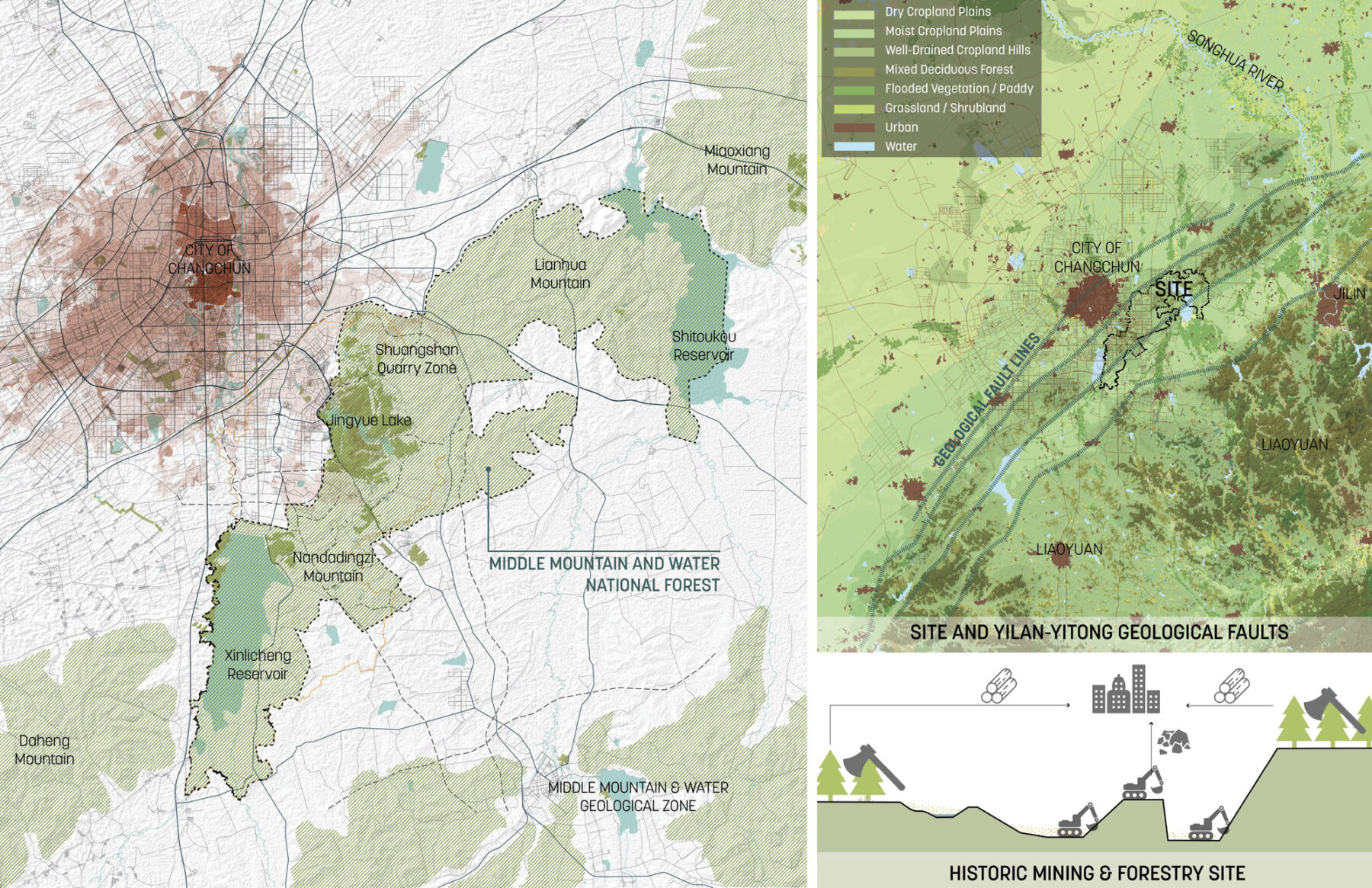
The study area serves as the region’s primary recreational destination, healing wounds from previous mining activity while also celebrating its geological context.
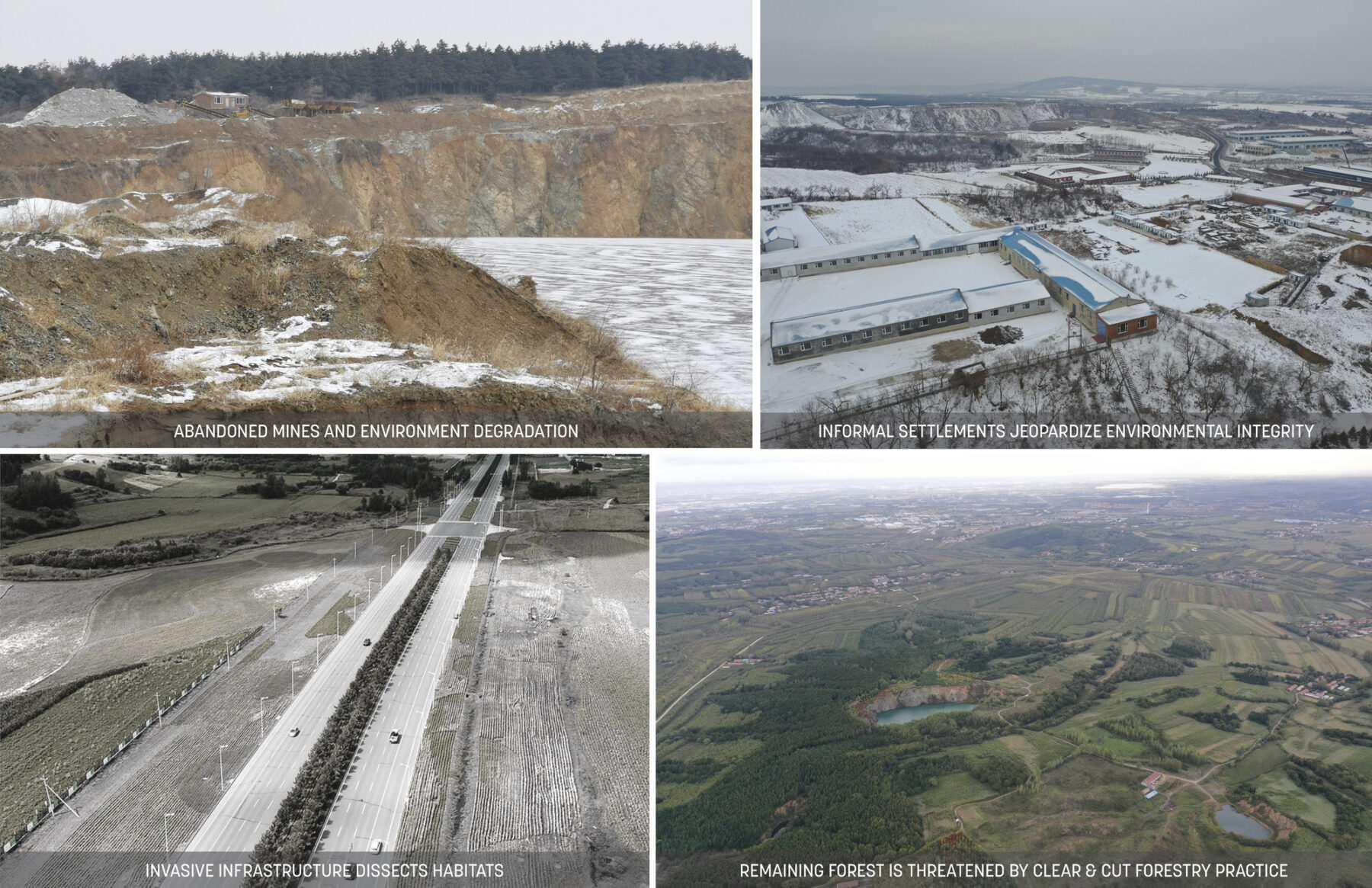
Critical preservation areas are currently disrupted by mining activities, massive infrastructure, and a series of informal settlements.
A Comprehensive Plan
Once a mosaic of grasslands and wetlands, China’s Northeast Plain consists of deep, nutrient-rich alluvial soils which have helped the area to become one of the country’s largest wheat producers. Through systematic GIS and ecological analysis, the project’s overarching goals used landscape restoration as a foundation to connect fragmented land use zones caused by previous urban development and mining activities. This endeavor allows for strategic community growth in carefully selected areas while protecting sensitive core habitats that make the area unique.
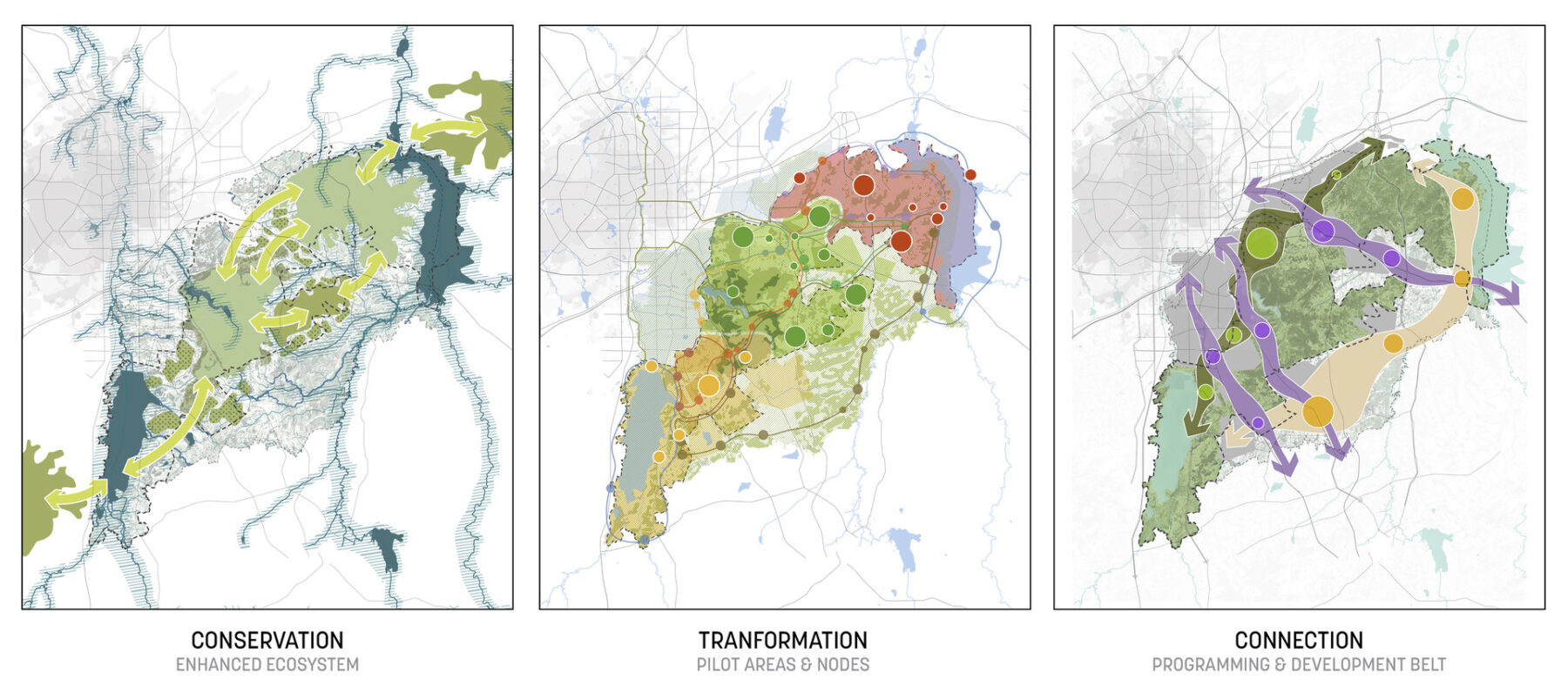
A comprehensive yet feasible action plan focuses on landscape restoration with catalytic programming away from sensitive habitats and within previously disturbed sites
Improving Ecological Connections
The Framework Plan preserves significant and contiguous patches of existing tree canopy as priority areas for habitat conservation, species movement, and enhanced ecosystem services. This strategy includes prioritizing hillsides prone to erosion and areas of fragmented tree canopy as zones for reforestation for conservation, recreation, and agroforestry industries. These socio-ecologic restoration areas create an enhanced buffer for priority habitat where conservation is emphasized, most notably in areas of dense canopy or high elevation. A focus on ideas that support balanced socio-ecological development through promoting forestry products, agriculture, and tourism ensures that the landscape is regenerative, productive, and serves as a community asset.
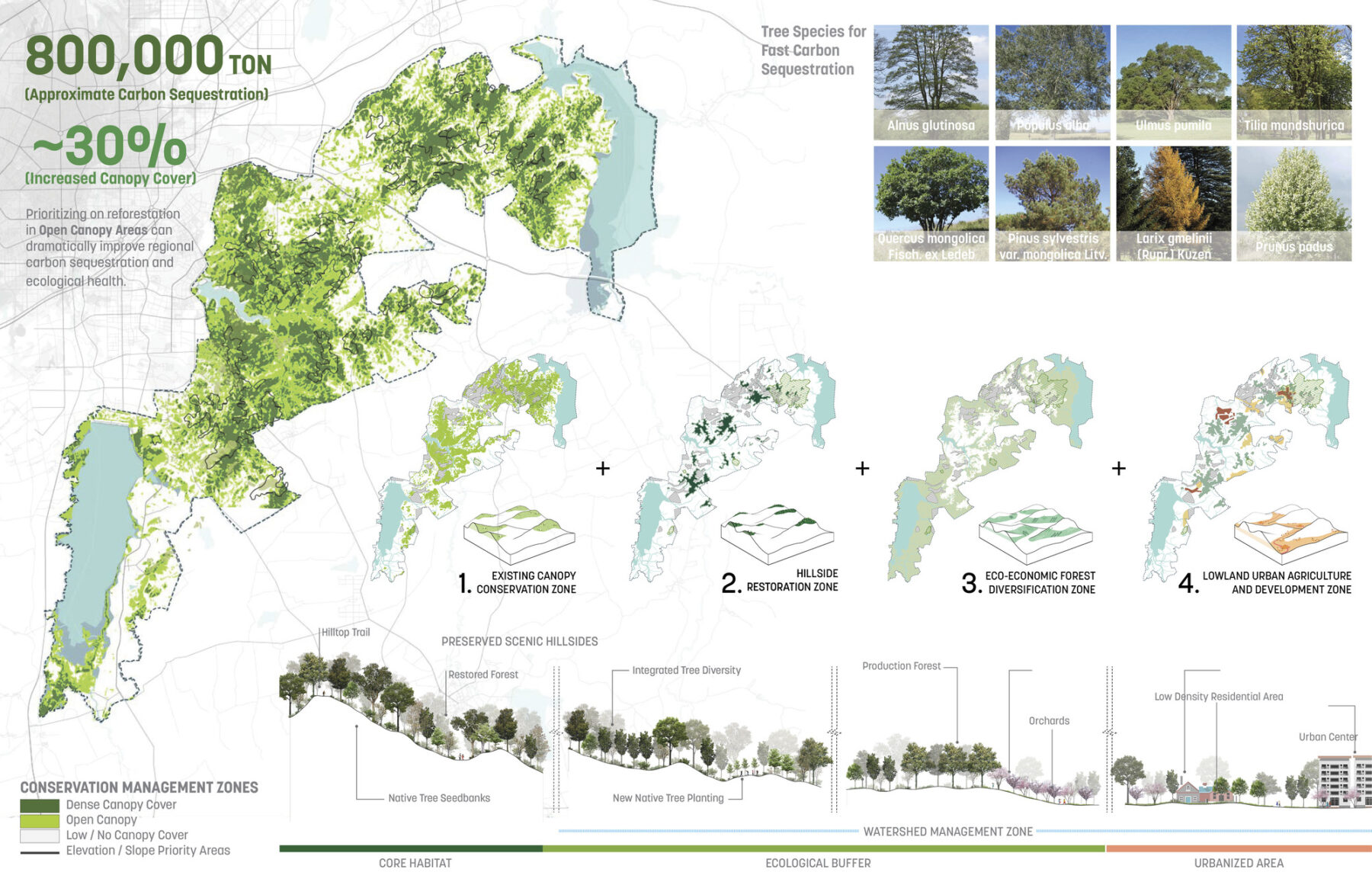
The Framework Plan was developed based on a comprehensive site investigation and a regional land use planning effort that creates a clear strategy for carbon sequestration.

A series of adaptive strategies are utilized for forest conservation while allowing for approved economic activities in pre-determined areas.
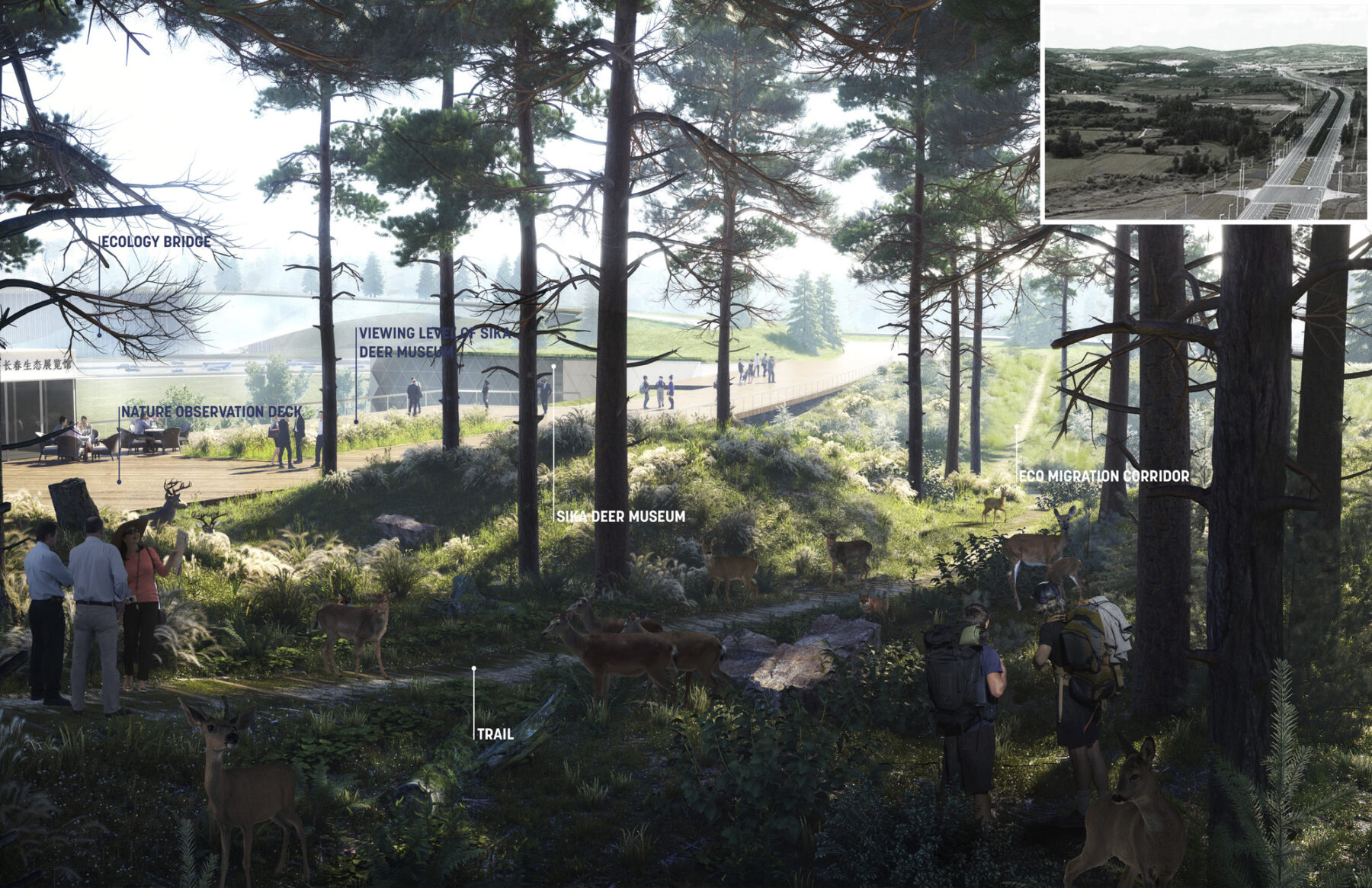
A landscaped bridge extends the existing greenway and provides opportunities to connect habitats bifurcated by existing infrastructure.
Enhancing Accessibility for All
The spine of the overall framework is built upon existing infrastructure, with new modes of transit that resonate with Changchun’s existing tram network and offers multiple opportunities to transfer from a variety of other public transit systems. This aggressive mobility strategy enhances accessibility and further reduces the carbon footprint in response to the city’s ambitious sustainability goals. The 30 mile-long transit experience offers an immersive opportunity to connect to the diverse destinations of the Middle Mountain area.
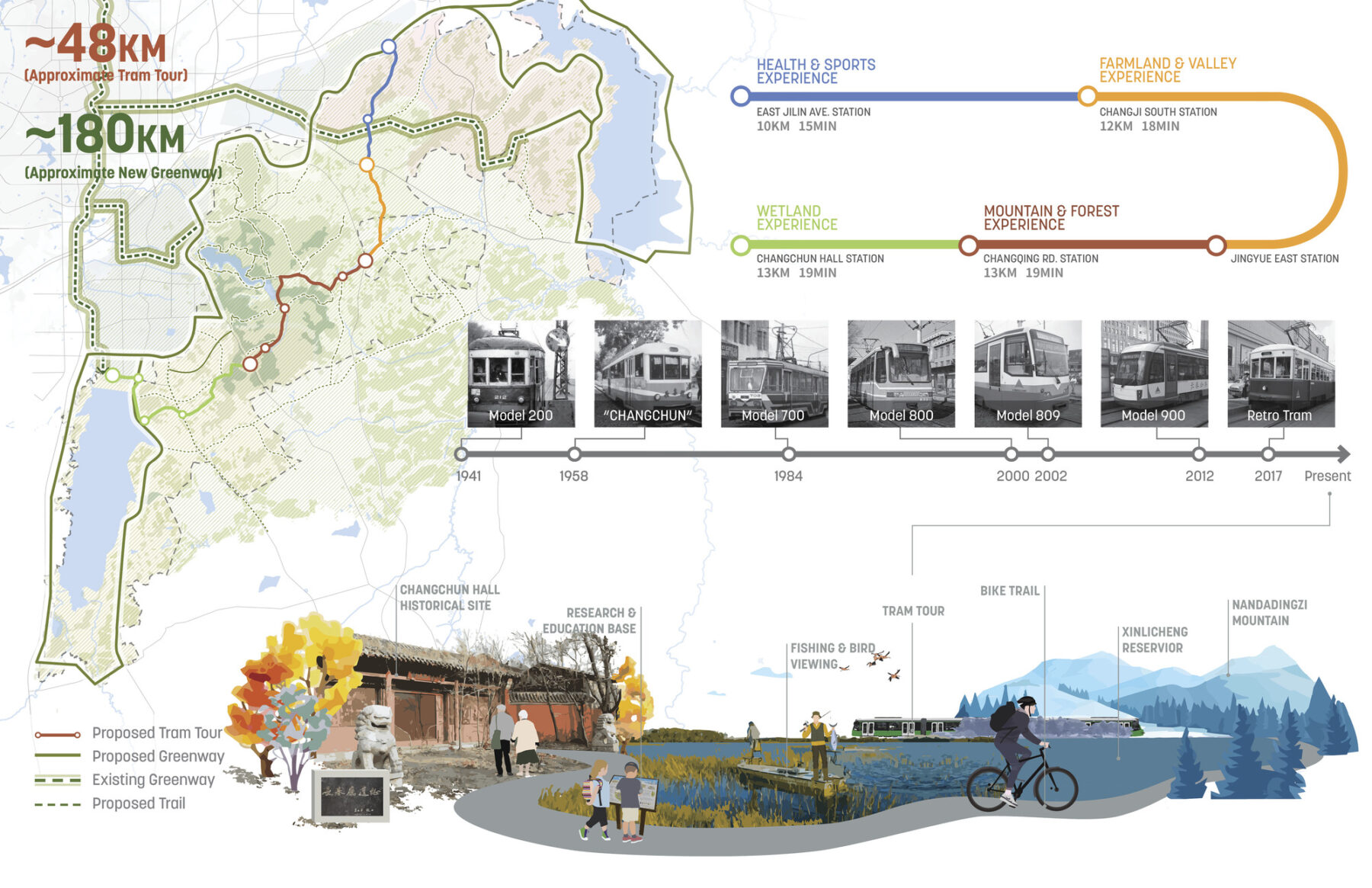
The plan introduces an electric cable car to link major destinations while establishing a new mobility network that resonates with the city’s iconic transit heritage.
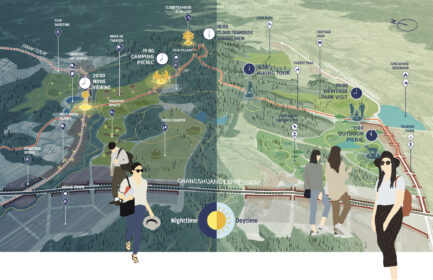
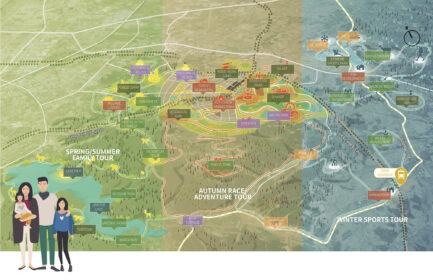
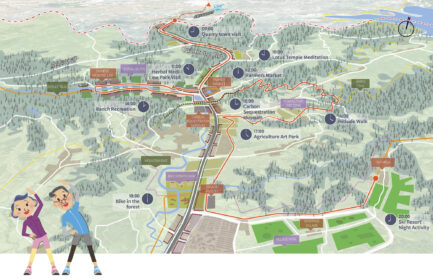
The greenway extension and the new tramline make recreational and educational experiences accessible to all.
Balancing Socio-Economic Impacts
The Framework Plan provides principles that will guide future development in tandem with additional protections to critical conservation areas. A series of village revitalization strategies boost the local tourism economy while providing job opportunities. The bike network extends the city’s greenway system and creates a loop around two reservoirs and links to multiple historical heritage sites. Rehabilitated quarries offer new recreational experiences, and provide a crucial guide for the restoration of the region’s natural beauty.
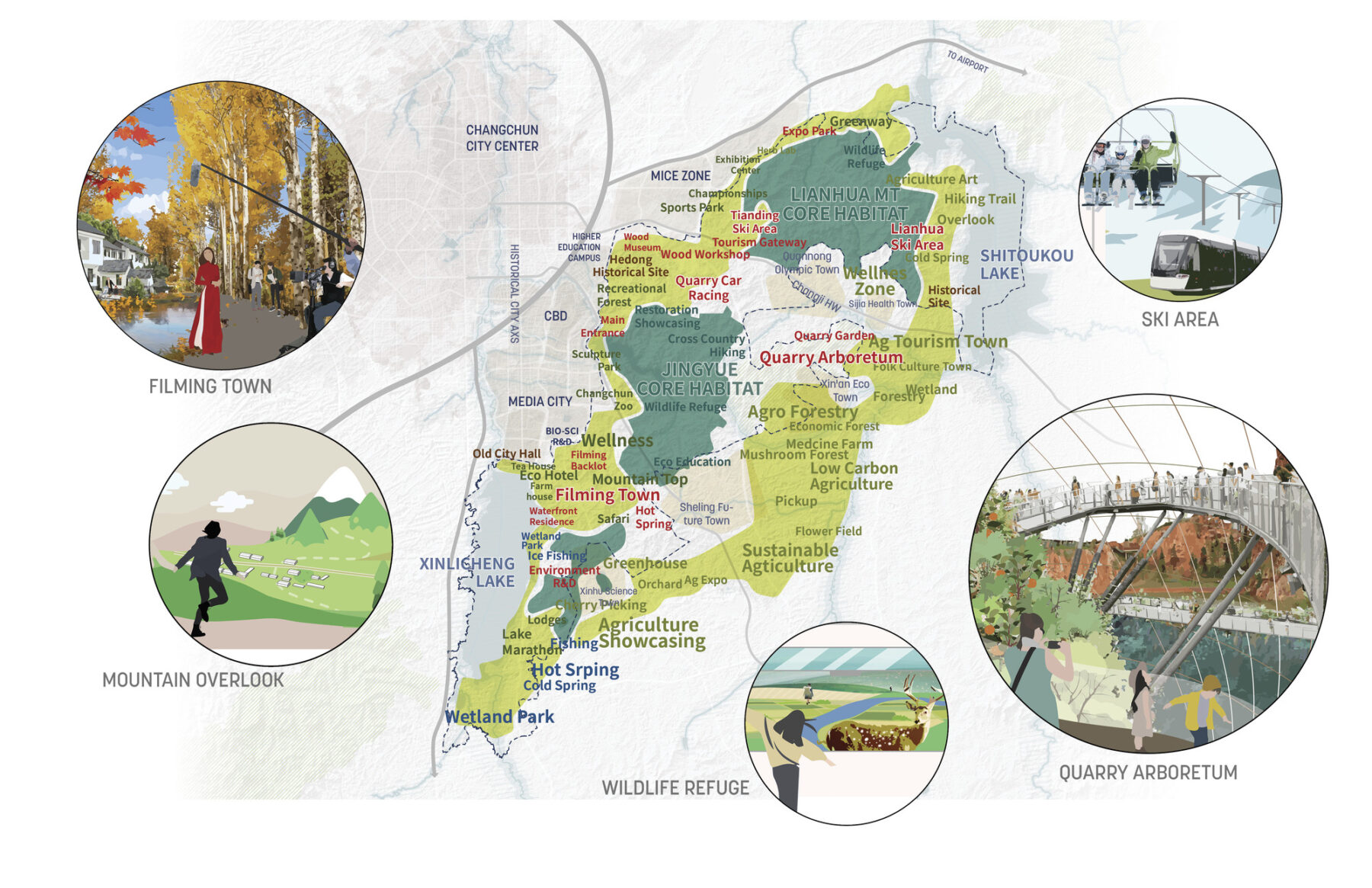
A series of recreational destinations are located in the foothills, offering a sinuous and ever-evolving landscape experience.
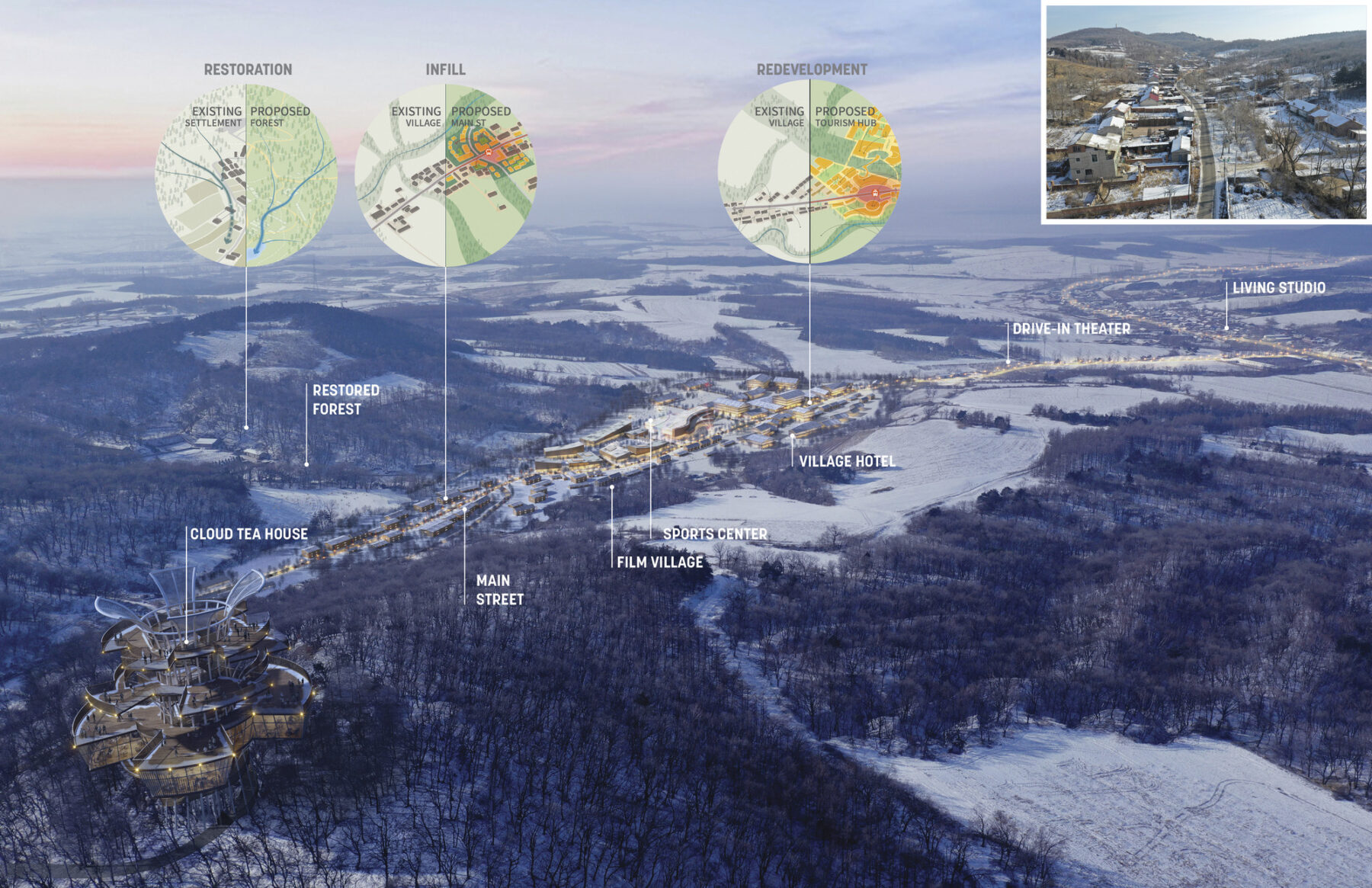
A series of redevelopment strategies transform existing villages into thriving destinations that welcome seasonal tourists and bolster the local economy.
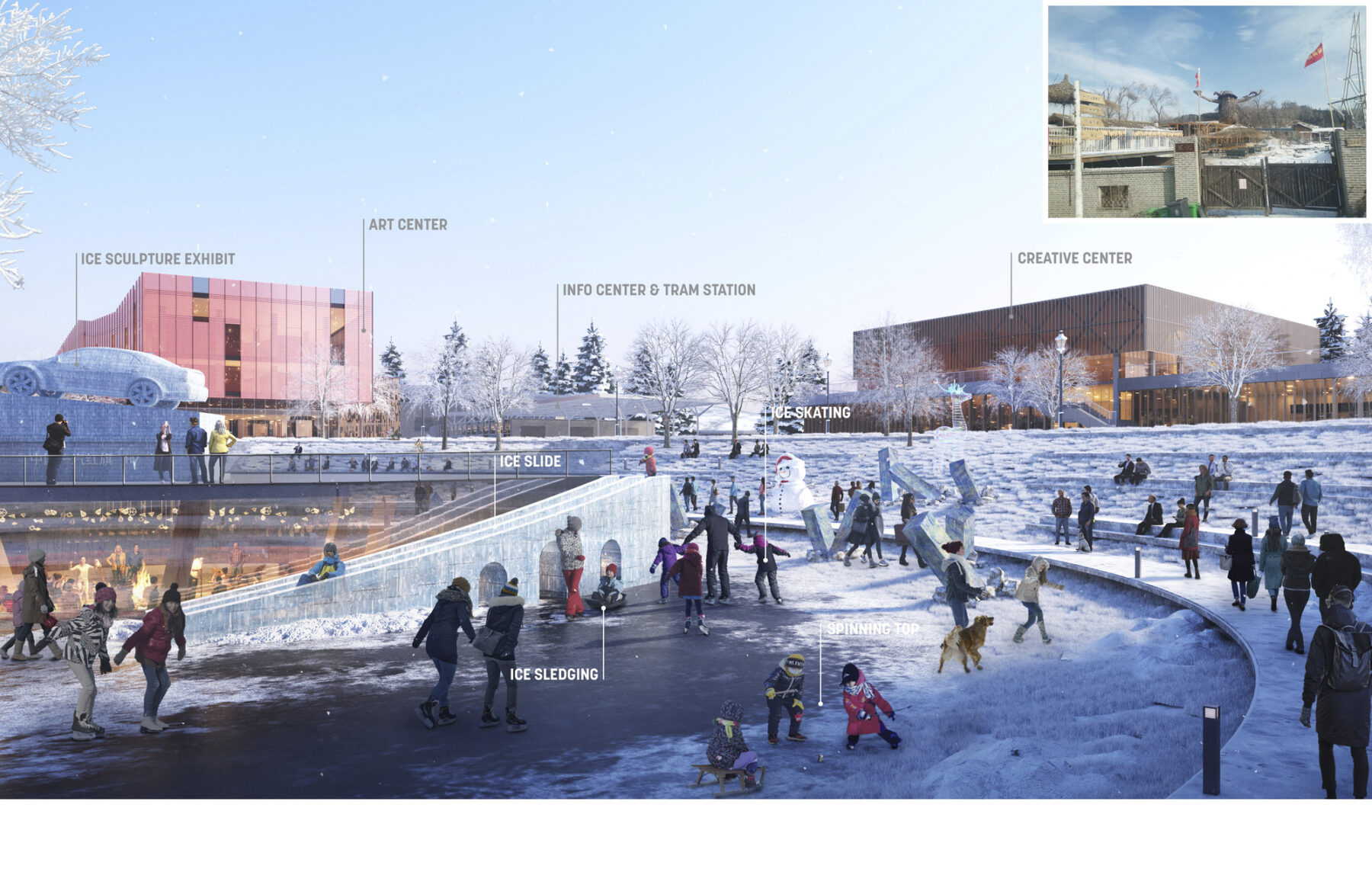
The plan considered the region’s seasonality as an asset, integrating existing cultural experiences such as the annual Changchun Film Festival with new programming to drive year-round tourism.
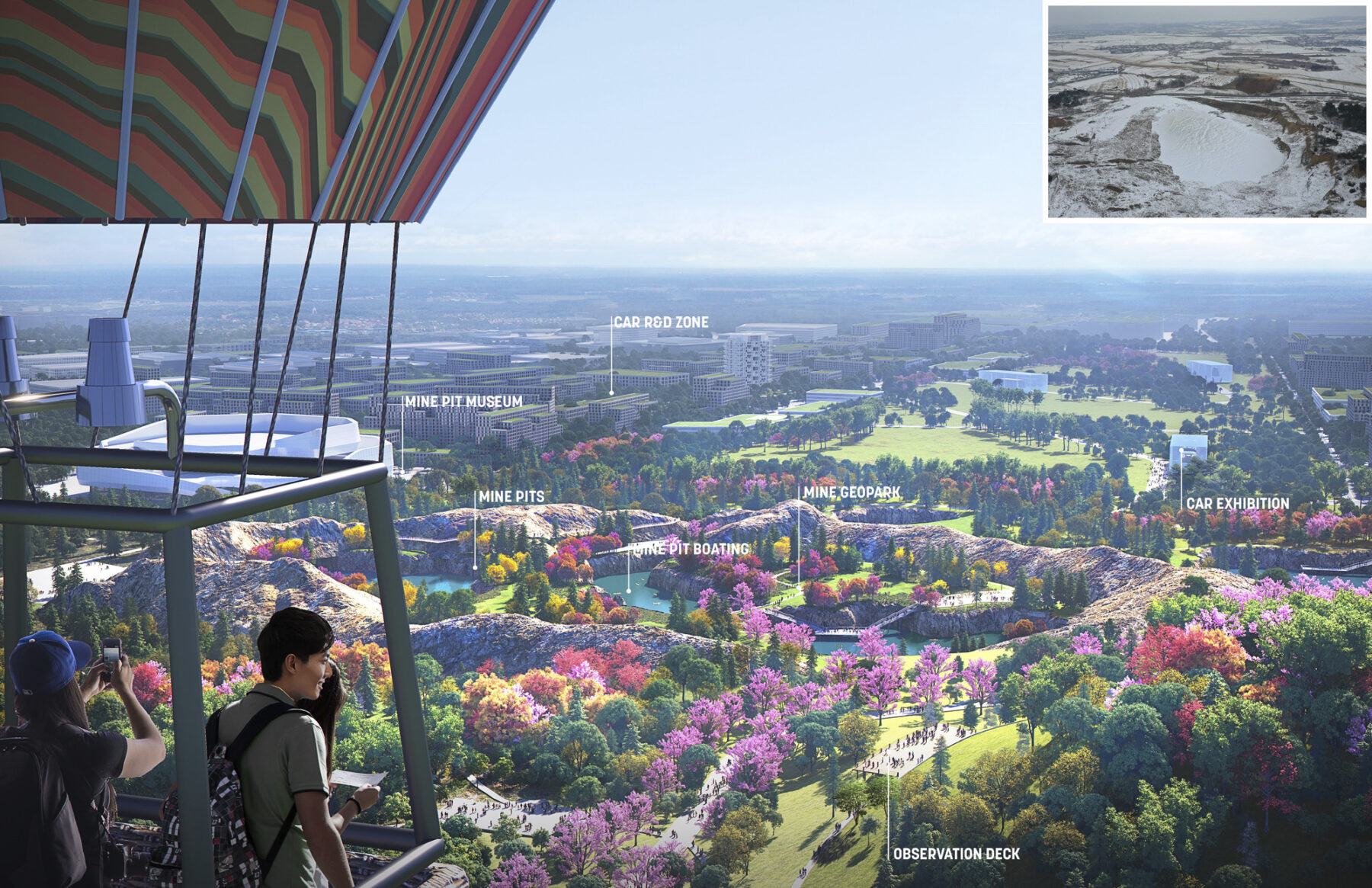
A series of disparate, decommissioned quarry sites are rehabilitated as a National Geological Park, offering opportunities for further research & development of brownfield sites that can be repositioned as assets rather than liabilities.
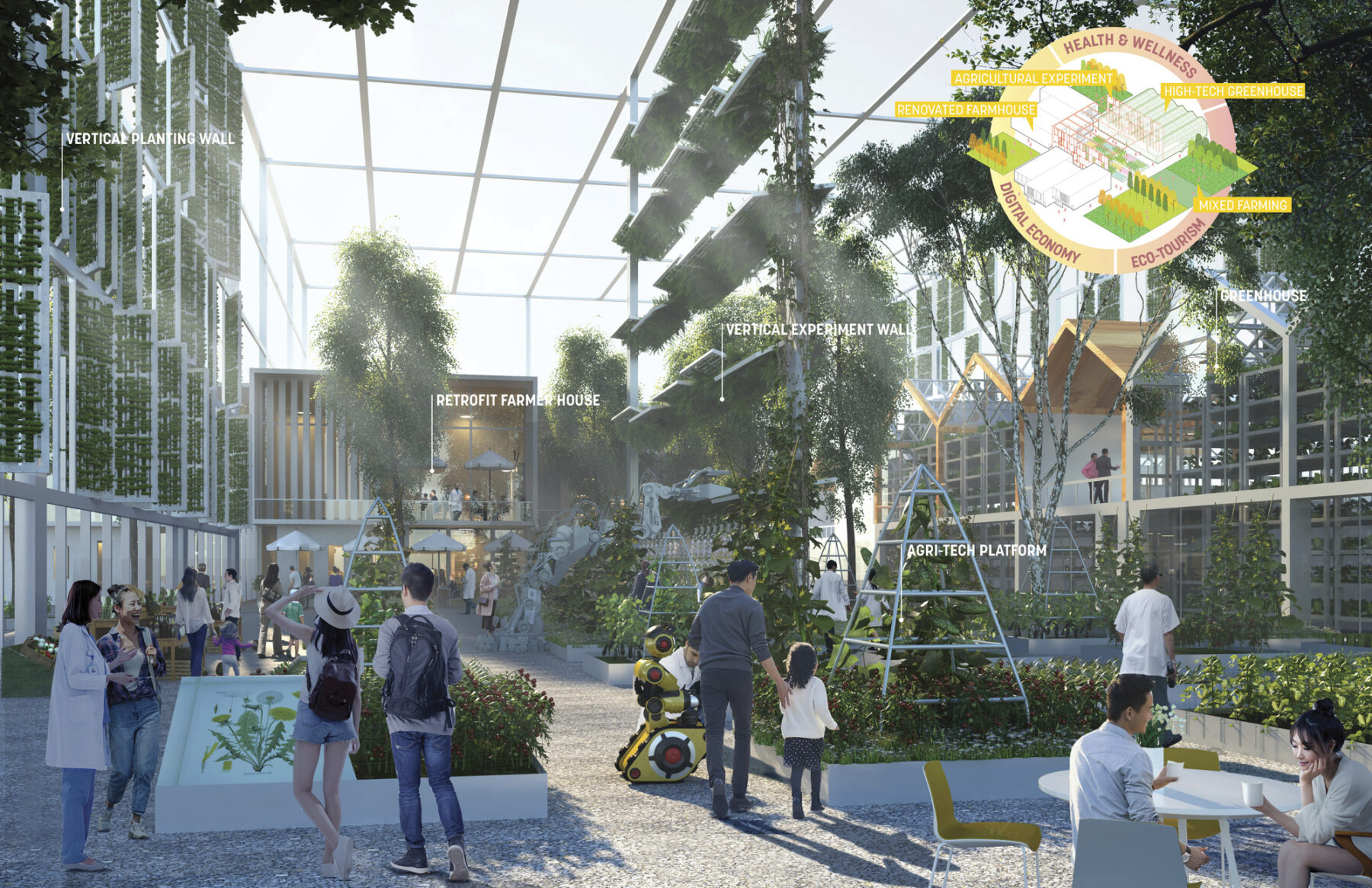
The village greenhouse highlights the potential to transform Changchun’s traditional soil-based agricultural practices into a 21st leader in innovative farming technologies.
An Ecologically-Informed Phasing Strategy
Ecological conservation and urban development were considered in tandem and intentionally dovetail from planning through implementation. Existing villages and previously developed sites are transformed as pilot projects while critical ecosystem restoration is underway. As the forest matures and the habitat diversifies, more eco-tourism related developments and infrastructures are introduced at gateway locations. Eventually, the whole area is envisioned as a self-sustaining network where existing natural habitats, restored forests and wetlands, tourism-related developments, and local agriculture are all thoughtfully integrated.
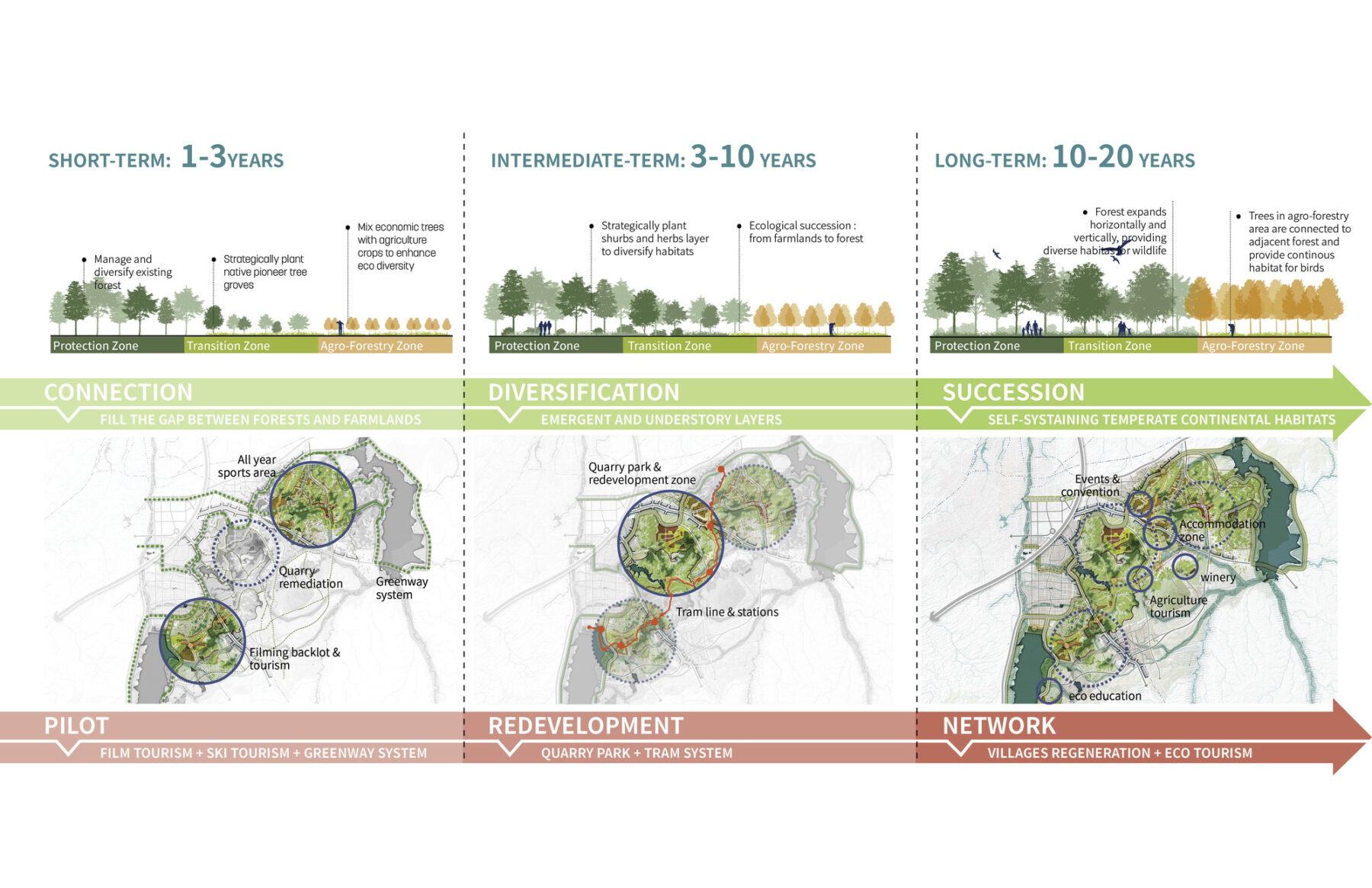
The phasing strategies build upon the process and successes of ecological restoration, and further informs the scale and intensity of future development opportunities.
For more information contact Michael Grove.
